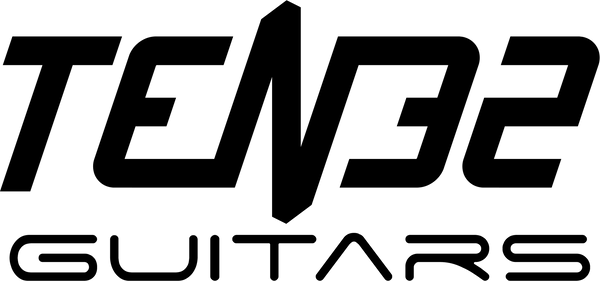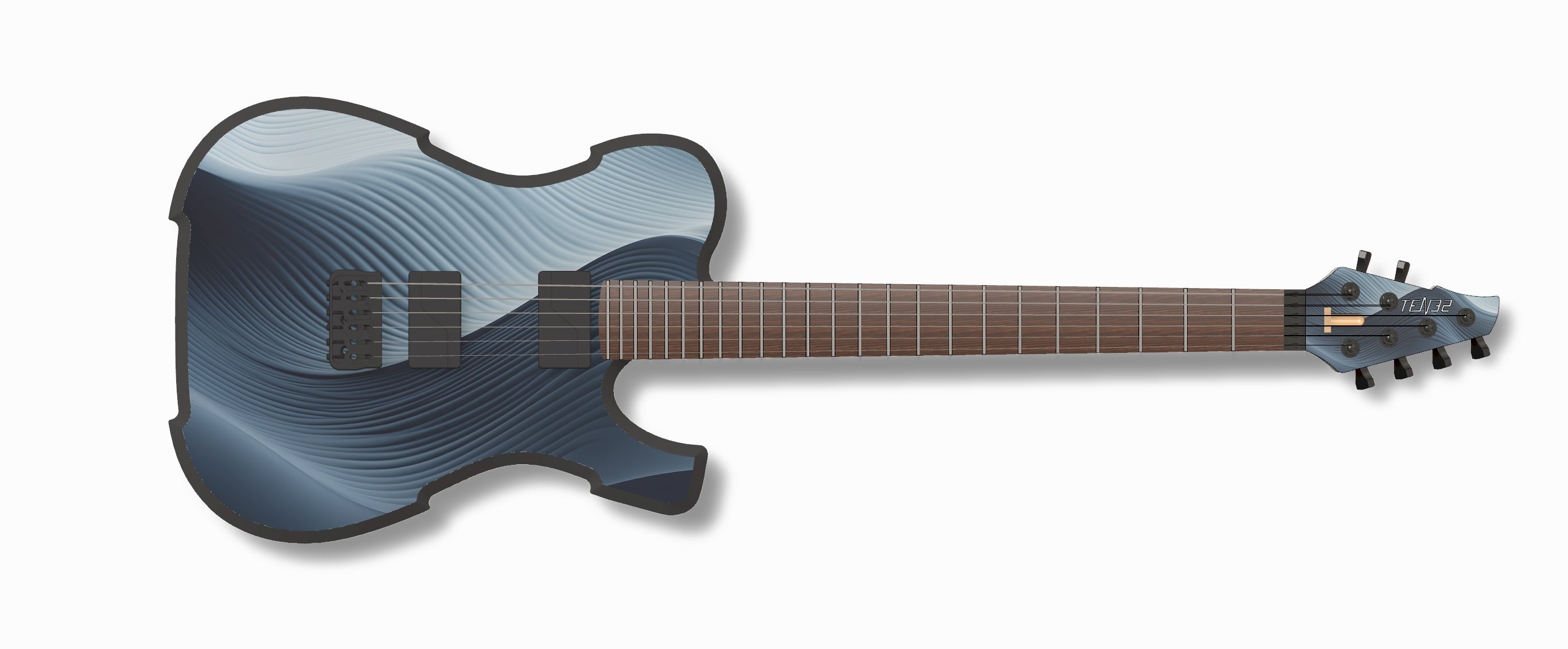Bolt-On Modular Aluminum Guitar Tops
Is it just me, or does it seem like we're being constantly reminded about AI coming for our jobs/lives/industries/souls? I read something along these lines almost every day, and it's definitely changed the way I think about the future. For example, all the articles screaming "use AI to your advantage or be left behind" got me thinking about how to use AI to improve my guitars. One of the ideas I explored was AI generated art.
Between the hyper-realistic "photos" showing up on Instagram, and the Midjourney Showcase page I stumbled upon when I started poking around, all of which is strikingly impressive, and literally infinitely prolific, it didn't take long before the inevitable "I wonder if I could get this massive wealth of art on guitars somehow" thoughts popped into my head, just like they would have for anyone else.
So I started thinking about it...I remembered this alternative art gallery in Santa Fe I went to during the pandemic, which was loaded with memorable stuff. One of the pieces was what they called an "Aluminum Archival Print", which I hadn't heard of at the time. Fast forward 3 years to October '23, and a possible solution presented itself - AI art printed on aluminum sheet, machined to perfectly fit a guitar top.
My first thought was to permanently embed the aluminum sheet in the body and cover it with a layer of epoxy, exactly as I would a figured maple top, but with a much thinner aluminum sheet in place of the maple. I was assuming they weren't tough enough on their own to stand up to guitar picks over time, but a bit more research revealed some technical advances that suggested they might actually be up to the task - in testing a certain type of aluminum called Chromaluxe, it took 2000 grams of weight before a scratch appeared! The test above was performed with a metal probe, so a much softer plastic guitar pick would require much more force to scratch these panels.
From there it wasn't a long journey to, "if they're tough enough, they can be bolted on, and swapped out resulting in......modular finishes?!?! No way that's feasible."
Obviously this was worth exploring, so I picked a vendor that used the tough Chromaluxe panels, found some artwork I liked, and cranked this out in Inkscape:

That's actually from a stock photo site, so I'm not sure if it's AI generated or not...
About 2 weeks later, this showed up:

I have to say, this thing is sharp. I haven't used it for a build yet, but I will of course post photos as soon as possible. As for the durability - I can't get it it to scratch with a guitar pick. The pick did leave some material on the surface of the aluminum, but it wiped right off every time I tested it! More scrutiny is required, but it passed the initial test easily.
If you're a geek like me, you're wondering about a few other things:
Will an aluminum top affect the electronics or TOAN?
As long as it's grounded, I believe the answer is "no" on both counts. I remembered reading about some older pickups that actually had metal covers, and surprisingly I couldn't locate an internet rant about those ruining anyone's precious tone (although I admit I didn't look very hard). The only way to truly find out is to test it, and I'll have ample opportunity to do so in the future. I'll probably do an A/B video with the top both on and off at some point.
How is it attached to the guitar body?
Attachment is the same patented arrangement as the primary bolt in my bolt-on headstock setup, and the TEN32 exclusive jack clamp - flanged threaded receptacles locked in the wood, which receive stainless steel machine screws to hold the aluminum sheet. As usual, no destructive fasteners here. Steel on steel threads means you can swap your top hundreds of times and the threads will remain fresh.
The same arrangement applies to the headstock, just scaled down a bit.
Are the edges gonna grab my forearm hairs or slice open my wrists?
I despise things that grab my forearm hairs (like the gap between the window controls and the cushion on the arm rest in my SUV) so I thought the best solution would be to essentially inlay the aluminum top. In this setup, its sits flush with the surrounding finish, avoiding any possibility of uninvited hair pulling. This also eliminates exposure to edges but of course, the edges will be machined smooth and clean anyway.
I do intend to experiment with the possibility of bringing the aluminum top all the way to the edge of the body chamfer for aesthetic reasons, but only if the stuff discussed above isn't an issue. The aluminum happens to be a perfect thickness in my estimation - thick enough to sit flat under it's own weight, while hardly weighing much at all. I'll add weight specs here when I've got one built, but I'm telling you - these things weigh a lot less than you might expect.
How much do extra tops cost?
I'll have new product listings up soon, but right now I'm thinking a matched set (body and headstock) will cost around $300.
Do these work with carved tops?
Not currently. They are flat, of course. Flat top models provide the most usable surface area, but my carved top models always have some flat surface area, so its possible to do a combination of aluminum & traditional finish if you really want to.
Why would I want this?
I get it - the purists will hate this idea (and a few of my other ideas too) so I'll provide my standard response - just like a bolt-on headstock vs a conventional neck, active pickups vs passive, etc, etc - an aluminum top is just another option. Finish options with a traditional aesthetic are available as well - makes no difference to me, they're all equally fun to build!
What's the image quality like?
It's really impressive, especially from realistic viewing distances. You have to get VERY close to the aluminum to notice anything blurry or grainy, just like any other high quality photo print. I'll update this post with photos asap.
Can I create my own artwork?
Absolutely! I've primarily used Midjourney so far, and I'm excited to try GPT-4, both of which are paid options, but there are some free alternatives as well. If you're already a Midjourney user, I'd recommend using a prompt like the below, then scaling up 4x after you find an image you like. The only important part of this prompt is "--ar 2:1", which produces an aspect ratio suitable for a guitar body.
/imagine subtle stone pattern overhead view neon green veins --ar 2:1 --chaos 50
Here's the result:

I liked the 4th one, so I upscaled it, then zoomed out 2x to get this:
Click image above for full quality version.
I then repeated that operation one more time, upscaled 4x, and slapped it on an EN0 model to get a feel for how it might look:
Click image to enlarge.
Don't like it? Honestly, I don't love it myself, but that's not the point. The point is that you can create an infinite number of these fast AF, and literally anyone can do it.
The above only took about 10 minutes, and can easily be applied to the headstock as well. From there, I'd just need to drop it into the rectangular image format shown above, export at 300 DPI and send it off to the printer. You can imagine the MASSIVE potential of this approach. Literally anything can be a guitar top, for example, another 10 minutes produced this:
IMPORTANT NOTE - If you're thinking the quality of these images doesn't look so great, you're not wrong - but that's just limitations of the software I used to simulate them plus image compression for the web. The original image - full size, full resolution, is here, and that's what you'll get on the aluminum print.




